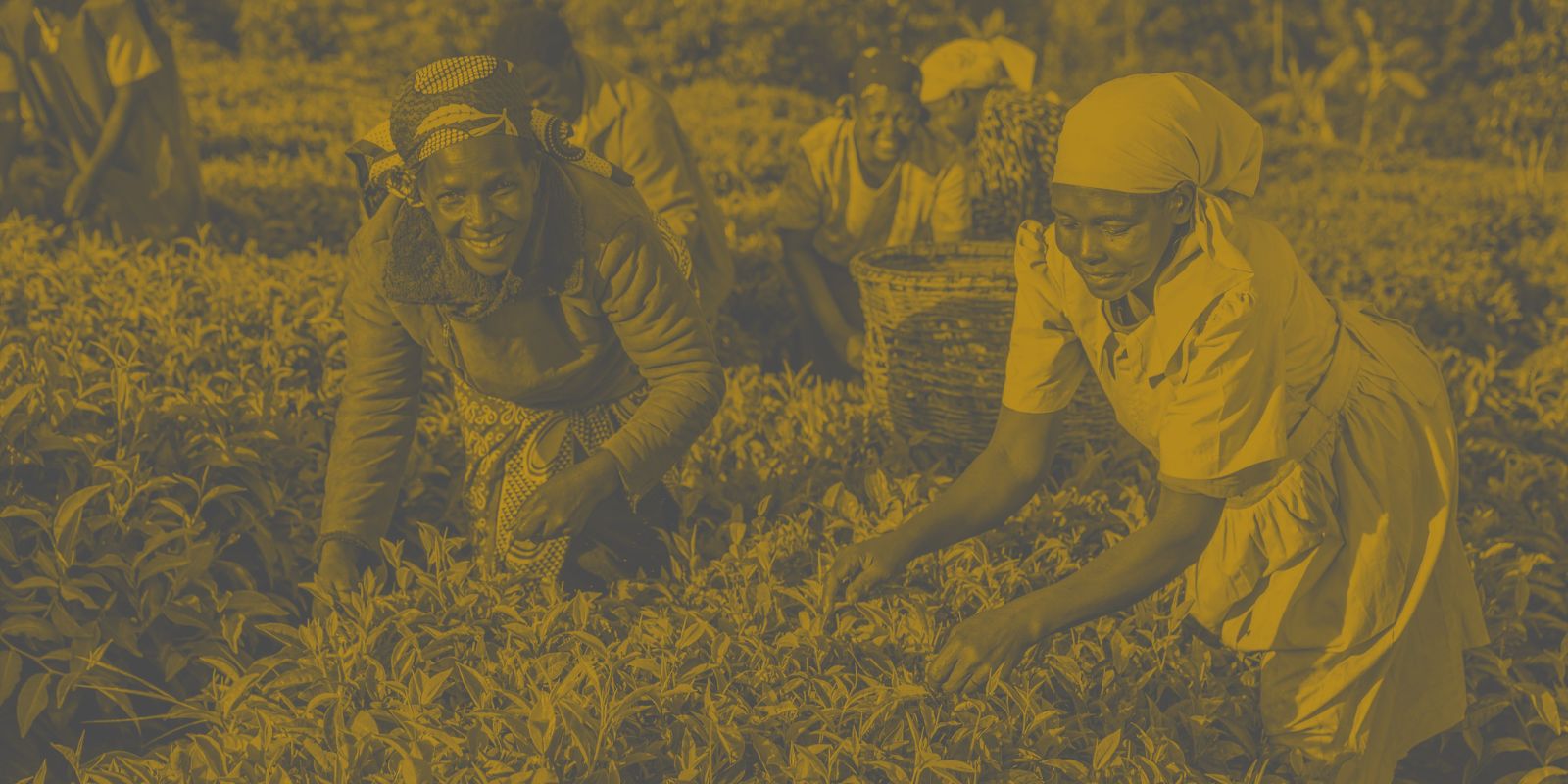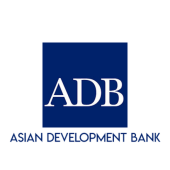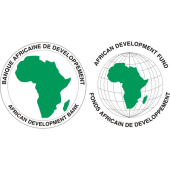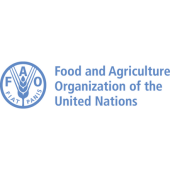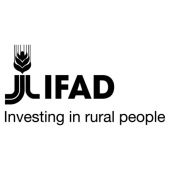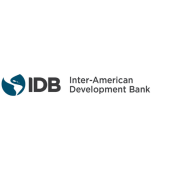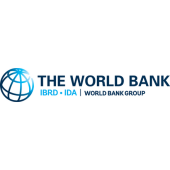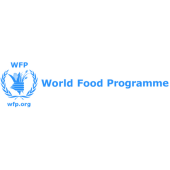GAFSP successfully concluded its Seventh Call for Proposals
GAFSP’s Seventh Call for Proposals for Producer Organization-led projects closed on May 9, 2023. The Program received 41 complete applications, with more than 60% of from the Africa region. The total funding requested was for more than US$106 million, which highlights the high demand for funding in low-income countries.
Global Agriculture and Food Security Program successfully concluded its Seventh Call for Proposals in July 2023, announcing new funding of $33.93 million for 15 Producer Organizations in thirteen low-income countries.
These 15 projects align with the GAFSP Steering Committee’s priority of addressing global food security challenges, promoting collaboration among development partners, and improving preparedness to effectively respond to future crises. Project grants were awarded to the following organizations:
- Sara Bangla Krishak Society (Bangladesh)
- Conseil National de Concertation des producteurs Ruraux du Tchad (Chad)
- Fédération des Organisations Paysannes Maraichères de la Basse Guinée (Guinea)
- Kyrgyz Association of Forest and Land Users (Kyrgyzstan)
- Agricultural Cooperative Mol Tushum (Kyrgyzstan)
- Lao Farmer’s Network (Lao)
- Nepal Agriculture Cooperative Central Federation limited (Nepal)
- Cooperativa de Servicios Múltiples “20 de abril” (Nicaragua)
- Fundación Aldea (Nicaragua)
- Coordination Nationale de la Plateforme Paysanne du Niger Niger)
- Farm Workers Trade Union - INGABO Syndicate (Rwanda)
- Samoa Federated Farmers Incorporated (Samoa)
- Sariiraale farmers’ cooperatives society (Somalia)
- Mtandao wa Vikundi vya Wakulima Tanzania (Tanzania)
- Coordination Togolaise des Organisations Paysannes et de Producteurs Agricole (Togo)
Through demand-driven and bottom-up approaches, GAFSP supports producer-led projects implemented directly by the organizations themselves, with the assistance of their chosen development partner—African Development Bank, Asian Development Bank, Food and Agriculture Organization of the United Nations, Inter-American Development Bank, International Fund for Agricultural Development, World Bank, or the World Food Programme.
About the Call
The world is facing a food crisis of an unprecedented scale, further exacerbated by climate change, conflict, and a global pandemic. In response to these ongoing challenges, the Global Agriculture and Food Security Program continues to serve as a valuable instrument for financially supporting the most vulnerable countries and communities.
Knowing that the needs of smallholders are urgent, GAFSP is launching the second part of the Seventh Call for Proposals dedicated to the Producer Organization-led projects.
The Seventh GAFSP Call for Proposals is part of the global response to the current global food security crisis. It is in complete alignment with the Global Alliance for Food Security (GAFS). It contributes to the mobilization of funding to overcome the current crisis and enable the long-term transformation of global agri-food systems towards more resilience and sustainability. The current Call consists of two parts: the first part is dedicated to Country-led proposals (CO-Call), launched in September 2022, and the second is dedicated to Producer Organization-led proposals (PO-Call).
The Guidelines for Producer Organizations are the principal reference and provide a clear guide for the submissions. Applicants are expected to submit their complete submissions in two parts as outlined below.
Proposals must be submitted to the GAFSP Coordination Unit using the following email address: gafsp-info@gafspfund.org. All submitted documents should be in either Microsoft Word, Excel, or in PDF format. All proposals must follow the provided submission requirements and must be submitted in English or French. Please contact the GAFSP Coordination Unit prior to submitting supporting documents in other major languages, which may be permitted on an exceptional basis.
Part 1: EOI
The first part, the Expression of Interest (EOI), includes a package of supporting documents to be submitted no later than February 24, 2023.
Part 2: Full Proposal
The second part is the full proposal template to be submitted by May 9, 2023.
The recording of the Information Session is now available in English, French, and Spanish.
Download the FAQ section as a PDF.
Abbreviations: PO = Producer Organization; SE = Supervising Entity; TAC = Technical Advisory Committee; CU = Coordination Unit; PO-Call = Call for Proposals for Producer Organizations
Eligibility Criteria
1. What are the eligibility criteria for the Producer Organizations?
As specified in section 5 of the PO-Call Guidelines: for GAFSP, the definition of a PO includes national and sub-national POs structured as either a producers’ association, union, federation, cooperative, or apex organization (including umbrella organizations or federations of POs) with the following characteristics:
- It is a local organization formed by a group of smallholder producers to undertake agriculture-, food, and nutrition-related activities, including storage, processing, and marketing.
- Its members include farmers, pastoralists, artisanal fishers, forest-dwelling groups, landless people, and/or indigenous people.
- It is owned by its members: PO members participate in the governance of the PO.
- Its profits and other benefits are shared among its members; and
- It is a registered legal entity.
2. Are regional or international organizations eligible to apply?
As specified in section 5 of the PO-Call Guidelines the PO-Call is dedicated to national and sub-national organizations. Regional and international organizations – meaning organizations operating across several different countries - are not eligible to apply. This was a decision made with an agreement from the Steering Committee, in order to reach organizations that have been historically unable to access this type of funding.
3. Are PO consortiums eligible to apply?
Yes, consortiums/apex/umbrella organizations are eligible to apply, but they must provide evidence of their experience and capacity through a proven track record of successful operations. Newly established organizations would struggle to meet these criteria.
4. Are POs that have not worked with GAFSP eligible to apply?
Yes, if they meet the eligibility criteria.
5. Can two or more POs submit a joint proposal in one country?
Consortium/umbrella or apex organizations that meet the PO definition criteria are eligible as long as they can provide a track record of the organization, which will be used to assess the consortium's managerial, fiduciary, technical, and operational capacity. A newly established consortium would struggle to meet these criteria as it would lack track records.
6. Are organizations owned by the State eligible to apply?
No, state-owned organizations are not eligible to apply for this Call.
7. Can NGOs apply on behalf of the PO? Can NGO apply as a co-applicant while PO is the lead?
No, NGOs that are not local and not responding to the definition of the PO are not eligible to apply.
8. Can an NGO be a partner in a PO-led project?
No, but they can be involved in the project in two ways: (1) by providing services to the PO in specific activities, and (2) by partnering with an eligible PO in the case they are co-financer on a project supported by a SE. Please note that in no case the NGO can play the role of SE.
We suggest contacting SE focal points to express your availability to support them in a PO-led project.
9. What are the eligible countries for this Call?

10. What are the exceptional circumstances under which NGOs and private companies can apply?
As specified in footnote 8 of the PO-Call Guidelines: NGOs are, in principle, not eligible. However, it is recognized that in some countries, entities that are de facto POs must register as private companies or as NGOs to constitute themselves as a legal entity. In these specific cases, the eligibility of national and subnational NGOs and private companies will be verified on a case-by-case basis by assessing whether the entity in question reflects the key characteristics outlined by GAFSP in the PO definition. It is important that the applying producer organization specify in the EOI why it should be considered for funding. If the organization is complying with the laid-out characteristics of the producer organization, the organization can apply, and their candidacy will be considered.
11. Does the PO need to have experience working with one of the SE to be eligible?
No. The PO is not required to have previously worked with any of the SEs, but it is required to have previous experience working with national and international partners, NGOs, and so on. With that, we assess PO’s capacity to coordinate projects and funds.
12. What is the minimum capacity required from the PO?
By minimum capacity, we understand the capacity to manage projects and funding. It will be assessed based on PO’s previous experience implementing projects and working with partners. The SEs are expected to conduct the quality and capacity check before the submission of the final proposal.
13. Is there a specific amount of funds that the PO needs to prove to have managed in the past to be eligible?
No, there is no specific budget. POs are asked to describe their experience with managing funds in section 4, Expression of Interest Template.
14. Can PO receive advice on its eligibility before submitting a proposal?
Yes, please reach out with your questions to gafsp-info@gafspfund.org. Note that the CU will perform an initial eligibility assessment based on the information provided in the EOI. Upon receipt of the final project submission, the Technical Advisory Committee (TAC) may conduct a more comprehensive review and potentially overturn the CU's initial assessment, rendering the applicant ineligible.
15. Can an organization registered in an ineligible country but working in an eligible one apply For example, an organization registered in India (ineligible) but working in Sri Lanka (eligible)?
No, to be eligible the organization must be registered and working in the same IDA-only country.
16. Is it an advantage if the PO is contributing to the cross-cutting themes of the Call?
As specified in section 9 of the PO-Call, contributing to cross-cutting themes will account for 20% of the ranking by the TAC. Therefore, contributing to one of the cross-cutting themes is not an advantage but a requirement that accounts for and improves the proposal’s rating.
17. Is it an advantage if the PO has already received funding from GAFSP?
As specified in section 3 of the PO-Call Guidelines, this Call will grant funding to PO with sufficient governance, administrative, fiduciary, and operational capacities to manage grant resources and achieve project objectives. Having managed GAFSP funds in the past it is a positive track record that will be considered by the TAC.
18. Is there a minimum requirement of how many members a PO needs to have to qualify?
No, as long as the PO aligns with the definition criteria and can provide a track record in managing funds and working on projects, it will be eligible.
Supervising Entities
19. What are the Supervising Entities for this Call?
As specified in section 10 of the PO-Call Guidelines the GAFSP SEs are the Asian Development Bank, African Development Bank, Food and Agriculture Organization of the United Nations, International Fund for Agriculture Development, Inter-American Development Bank, World Bank, and World Food Programme.
20. What is the role of the Supervising Entity?
As specified in section 10 of the PO-Call Guidelines, the selected SE has the responsibility to submit the Proposal to the GAFSP CU on behalf of the POs. Proposal preparation remains the responsibility of PO applicants, but the SE partner must review, conduct a quality check, and co-sign the Part 1 and Part 2 documentation. If a proposal is selected for GAFSP financing, the recipient PO will work with its selected SE to design and appraise the proposed project in line with the SE’s policies and procedures. This will include fiduciary matters such as the flow of funds from the SE to the PO as well as clarifying procurement methods that will be applicable for PO-procured works, goods, and services. The POs should be aware that different SEs have different policies and practices as they pertain to these matters and consider these issues carefully when selecting a partner SE.
21. Can SE submit more than one proposal per country?
No. As specified in section 10 of the PO-Call Guidelines, the SE can only partner with one PO per country and we recommend that SE selects the PO that has the most chances to get funding. As specified in footnotes 13, the SE will be allowed to be a partner in two projects in the same country only where one of the two proposals comes from one of the active PO-led projects in the GAFSP portfolio.
22. Are there guidelines for the Supervising Entities on how to select the PO?
There are no specific guidelines for SEs on how they should select the POs. The SEs should follow the eligibility criteria as described in the Guidelines for Producer Organizations in section 5.
23. Which SE should submit the proposal for additional funding for an existing PO project?
A PO cannot request additional funding for an existing GAFSP PO-led project through a new SE. Proposals requesting additional funding should be submitted through the same SE as in the original proposal.
24. How can a PO get in touch with the SE in their country if it has not previously worked with one?
Below is the list of SE focal points:
- African Development Bank, Philip Boahen, p.boahen@afdb.org
- Asian Development Bank, Michiko Katagami, mkatagami@adb.org; Qingfeng Zhang, qingfengzhang@adb.org
- Food and Agriculture Organization, Benoist Veillerette, benoist.veillerette@fao.org; Reid Cooper, reid.cooper@fao.org
- Inter-American Development Bank, Santiago Monroy Taborda, santiagomo@iadb.org
- International Fund for Agricultural Development, Enika Basu, e.basu@ifad.org
- World Bank, WB SE focal group, gafsp_wb_se@worldbankgroup.org
- World Food Programme, Chris Toe, chris.toe@wfp.org; Jordi Renart, jordi.renart@wfp.org; Giulia Polidori, giulia.polidori@wfp.org
25. Can a PO submit a proposal on its own (without SE)?
No. As the guidelines state in section 10, the EOI must be submitted by the SE partner, including their name and signature. This is a mandatory requirement and cannot be waived.
26. Can two SEs support the application of a PO in a country?
No, a PO can choose only one SE as implementing partner.
Project Proposals and Submission Process
27. What are the thematic areas that the project needs to address?
Climate, women's empowerment, and/or nutrition. Each project proposal should revolve around at least one of these cross-cutting priority themes. Each proposal would also need to integrate the new approach to climate approved by the SC in April 202,2, according to which each project should have climate-related activities, as well as at least one climate indicator in the results framework. Please refer to the GAFSP Monitoring and Evaluation Framework. Each project should also include efforts to close the gender gap, including improving women’s access to resources, jobs, and decision-making. Please refer to section 3 in the Full Proposal Template to learn more.
28. What is the recommended project duration?
As specified in Part 2 - Final Submission template, in footnote 2 the recommended duration is 4 years maximum or less.
29. Is there a desirable start date for the project?
As per the guidelines, project preparation should not delay beyond two years after grant approval. However, starting the project as soon as possible is key to maximizing its impact, to address the pressing needs on the ground.
30. How many pages should each part of the proposal have?
The recommended proposal length is specified on page 1 of each template.
31. Can the PO proposal include investment in infrastructure?
GAFSP does not fund big infrastructure projects. Investments into smaller infrastructure elements may be permitted but will be assessed on a case-by-case basis by the Technical Advisory Committee.
32. Can a previous proposal be submitted again (if it was not successful before)?
Yes. POs that have already received funding from the 2021 Call for Proposals can apply for additional funding but are not eligible to submit a proposal for a new project. POs which submitted proposals in the 2021 Call for Proposals but were not selected are eligible to submit a new or an updated proposal, provided that the new proposal is adjusted and respects the objectives and requirements of this specific PO-Call.
33. If a PO has experience with a project in one geographic location and wants to upscale in another geographic area, will it be considered an upscaling or a pilot?
If a PO has previously implemented and managed this experience in one geographic location and now seeks to expand the project's scope to another geographic area of the same country, this can be considered as an upscaling of the existing activity.
34. What happens after the Expression of Interest has been submitted?
As specified in section 8 of the PO-Call Guidelines, after the reception of the EOI, the CU will perform an initial eligibility assessment and will review submissions to verify that the package is complete. The CU will not assess the quality or merits of the submitted documents, which will be done subsequently by a Technical Advisory Committee (TAC) after Part 2 is complete. Before March 10, the CU will notify the PO of its ineligibility if it is evident that one or more of the criteria listed in section 5 are not met. Ineligible POs and incomplete submissions will be excluded from further consideration. Eligible PO that submitted a complete application will be able to move forward with the preparation of Part 2 - Final Proposal template. Please note that in this phase, the Technical Advisory Committee (TAC) may conduct a more comprehensive review and potentially overturn the CU's initial assessment, rendering the applicant ineligible.
General Questions
35. What is the funding available for this Call?
As specified in section 4 of the PO-Call Guidelines, the GAFSP expects approximately US$ 25 million to be allocated in grant resources for eligible POs. Additional donor commitments may become available by the date of grant award allocation (expected in July 2023), which could increase the total allocation amount. GAFSP plans to allocate funds to several projects with up to US$ 3 million per project. The minimum funding requirement for PO-led projects is not specified. Allocations below $1.5 million will be considered for ongoing GAFSP PO-led projects that submit additional funding requests in the form of grant proposals. However, it is not recommended to request grants under $1.5 million for new projects, as the cost of implementation would become disproportionately high. The average funding for PO projects to date is $2.5 million.
36. Is co-funding required?
Co-funding is not required, but it can be included and must be listed under the Project Funding information together with a letter of the intent of co-financing partners to the proposed project.
37. What the engagement with the national government should look like?
As specified in section 10 of the Call-PO Guidelines, official clearance from the government is not required to submit a PO-led project proposal. However, SEs are required to inform the relevant ministry (agriculture or finance) that the PO will submit a project proposal to apply for funding from GAFSP under the supervision of the SE. This is a step required in Part 2 of the submission process. In the SE Letter of Readiness, it is expected that the SE confirms that the government was informed about PO’s application and provides proof of this official communication.
38. Can project proposals be submitted in the official language used by the PO?
As specified in section 11 of the PO guidelines, GAFSP proposals and any submitted supporting documents are required to be in English or French, including the bylaw of the organization.
